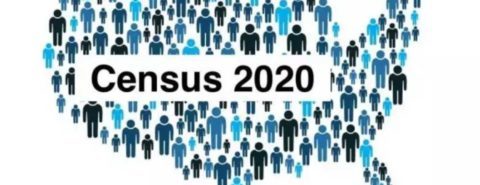Oxford University Press's Blog, page 97
September 21, 2021
Increasing the diversity and depth of the peer review pool through embracing identity

One thing the COVID-19 pandemic has brought into stark focus is the importance of both a speedy dissemination of research, and the need to be able to trust the validity of this information—meaning researchers need to tackle both the virus and the “infodemic” of contrasting misinformation, rumour, and conspiracy that has surrounded it. This week is Peer Review Week, and is a timely reminder of how crucial a role this plays in building confidence in research.
This year is dedicated to the theme of “Identity in Peer Review.” The term identity—who or what a person is—can mean many things, but personal identity is important in building trust through increasing accountability in the research process. Additionally, knowing a reviewer’s identity widens scrutiny; increases transparency and provides context for authors to better understand why a reviewer requests specific changes.
At GigaScience, for nearly a decade now we have tried to increase transparency and trust by throwing open the entire peer review process, letting people really “look under the hood.” We, and others, have found this open process to be generally more constructive, and previous studies on open peer-review have also shown that quality and courteousness of reviews increases and that there are very few negative effects. Open peer review is not really new: the medical community has over 20 years experience in reviewing in this manner. While in the past there has been some hesitancy about sharing a reviewer’s identity, opening up peer review is becoming the norm in a growing number of fields and journals, including PLOS joining the party last year. Increasing transparency in the research process through identity, is an extremely timely weapon in fighting skepticism in the scientific process during these turbulent times.
Along with trust, reviewer identity is essential if—as should be the case—we want to credit and acknowledge the extremely hard efforts of our peer reviewers. Being skilled and experienced enough to judge others’ work shows your standing and service in your field, and evidence of this can be useful for getting promotions, jobs, funding, and even in immigration applications. As an Open Access Journal published by OUP, in addition to just adding reviewer names to our reports, we also publish and license the reports under the same CC-BY license as the article. This serves two purposes: it makes these more discoverable via third-party platforms such as Publons, and provides a citable published record of the reviewer’s contribution to the field.
Serving as reviewer is an important skill, and, while it can be a lot of effort, being asked to be a reviewer is a clear indication that you are perceived by journal editors as a peer and expert in your field. It is particularly important to early career researchers to be involved in this process, as they are not only the next generation of reviewers, but are the key drivers and people that will help broaden the diversity and experience of views in academia. Crossing disciplines and reducing preconceptions and bias in the whole process of assessing research is essential. Thus, it is extremely important to credit and recognize students and junior researchers who often co-review papers with their supervisors and PIs. To make this possible, they need to be named and co-sign the reports. At GigaScience we try our best to ensure that their details are listed in the metadata of the digital-object-identifiers, which will enable this credit to be carried over to their online Publons and ORCID profiles.
Peer review, or the lack of it, for preprints, has become a big topic of discussion during the pandemic. Preprints serve as the best way to rapidly release scientific information, and, encouragingly, we have seen an explosion in the use of bioRxiv and medRxiv, providing a mechanism to share crucial information relating to the COVID-19 outbreak. While this has sped up the flow of crucial information, there have been worries about the reliability of research that hasn’t yet been peer-reviewed. A great boost in confidence, however has been the growth of preprint reviews where, typically, reviewers are identified. BioRxiv has taken the presence of reviews in their server to the next level with their new “Transparent Review in Peer-review” or TRiP workflow that enables journals and a growing ecosystem of peer review services (for example Peer Community In, of which we have also endorsed as a “friendly journal”), to post peer reviews alongside the preprints of submitted manuscripts. Being big fans of both preprints and open peer review, becoming part of this was an easy sell for us at GigaScience. We are happy to announce that we have joined journals such as eLife and EMBO journal in implementing it (see the linked papers here and click the TRiP reviews tab to see linked open reviews).
The growth of preprint peer reviews not only helps authors and readers, but also, with the identity of the reviewers included, it provides a wider platform for journals to find potential reviewers and editorial board members. ASAPbio has taken a proactive step in making this happen by launching a pilot Preprint Reviewer Recruitment Network (PPRN) to enable willing researchers to share preprint feedback as work samples for review by participating journals. This is an excellent way to help early career researchers break into reviewing or editing roles. GigaScience is one of the initial participating journals, and we would encourage interested potential reviewers to sign up here if they are interested in joining this important effort. We are already using this network, and will be happy to be able to identify more researchers to be involved in our publishing activities.
This peer review week, think about boosting transparency and trust in peer review by embracing your identity and taking credit for your contributions towards assessing the quality of research. Carry out preprint reviews and help journals participating in TRiP, and also sign up for the PPRN to more widely disseminate preprint feedback.
Featured image by Markus Spiske

Eradicating ableism with disability-positive K-12 education

More than half a century ago, powerful civil rights laws brought disabled children into American school systems, breaking down the physical barriers that held these young people at the margins of society. But attitudes towards disability as a devalued limitation persisted, holding social and cultural barriers between disabled and nondisabled people firmly in place. There is, however, an opportunity to use the power of education and learning to reimagine how we design the world.
In 1970, United States public schools educated only one in five students with disabilities, and most states had laws on the books denying children with both physical and developmental disabilities access to mainstream schooling. In 1975, Congress passed the Education for All Handicapped Children Act (EHA) to support states and localities in the public education of students with disabilities. When it was reauthorized in 1990, EHA was renamed the Individuals with Disabilities Education Act (IDEA). As a millennial born in 1984, IDEA afforded me, a blind kindergartener, the right to attend my local public school. I was born with a degenerative eye condition that meant I would have night blindness my whole life, and gradually lose my daytime vision as well.
By 2016, 95% of children 6-21 who were eligible for services under IDEA were spending at least some part of each school day in a mainstream classroom. This was a huge leap forward but was happening in the absence of a major culture shift—even though more and more disabled children were joining classrooms, disability was absent from the curriculum. For instance, no one—not my parents, my teachers, my classmates, or myself—referred to me as “blind.” We often referred to my “eye problem,” or said that, “I couldn’t see in the dark.” There was no vocabulary to describe my sense of difference, though it was deeply felt.
In school, I did wear glasses, but none of the trappings of blindness—the white cane, the Braille business cards—those would come later. Still, I was the source of relentless bullying. I recall dreading mundane things like accidentally dropping my pencil on the ground, as I’d have to kneel down, in a cold sweat of shame, as the boys in the class taunted me, calling me “blindy” as I traced my fingers across the floor to locate my fallen writing implement. This was all because none of us knew better—because, for centuries, disabled children were bundled away and corralled inside institutions, while nondisabled children were taught to fear and underestimate them. These deeply-engrained fears of disability still exist in the present day and are acted upon in ways that harm disabled children.
Though there are only 10 US studies linking disability to bullying in school, according to one study from 2009, disabled children were two to three times more likely to experience bullying than their nondisabled peers. A more recent 2019 analysis from the National Center for Educational Statistics found that, alongside physical appearance, race/ethnicity, gender, sexual orientation, and religion, disability was among the most common reason for bullying reported by students. Negative outcomes of bullying include lower performance in school, greater absenteeism, and lower graduation rates, among others.
This data comes as no surprise to me, as it reflects my own childhood. And this is how schools perpetuated a culture of ableism—and it took powerful civil rights laws to achieve the simple step of giving disabled children access to the same educational opportunities as their nondisabled peers.
Thankfully, for a new generation of disabled students, this reality is changing, and we can begin to see a world remade by people who will grow up immersed in disability-positive education.
Organizations like Disability Equality and Education in Pennsylvania are developing disability-positive curricula that teach children about various forms of disability, as well as how to honor and respect the differences that make us all whole and human. Disabled authors are publishing children’s books like We Move Together and Rolling Warrior that further reinforce these ideas. Films like Crip Camp are being used in schools to tell stories of the disability civil rights movement. These are the narratives that I had to seek out in my adult life, that will no longer be invisible for the next generation of disabled youth.
And this is just the beginning. States, localities, and school boards must demand that disability become part of the K-12 curriculum. Students who, because of IDEA, have the opportunity and the right to learn alongside their nondisabled peers should see themselves in the education they receive. And they shouldn’t be alone in these discoveries—nondisabled children should be right there with them, building disability consciousness and finding creative ways to work together to ensure everyone is included in every aspect of life. If this becomes the foundation, a child who grows into an architect is less likely to forget to build that ramp and make it beautiful; a high school student who becomes a doctor is more likely to show compassion and provide accommodation to a disabled patient; and a nondisabled government leader is more likely to consider disability issues when designing public policies. Even after the harms of bullying and the loneliness of exclusion, I believe this new world is possible because knowledge is a powerful tool to repair our entrenched fear of otherness.
Featured image by Markus Spiske on Unsplash

An empire of many colours? Race and imperialism in Ancient Rome

Romans sometimes worried that you couldn’t tell enslaved and free people apart. Seneca told a story that the senators once debated requiring all slaves to wear a particular costume, until they realised it would show the slaves how many of them there were in Rome. Pliny described an embarrassing encounter in the baths when a senator—naked, of course—was mistaken for a slave. These are the characteristic paranoias of slave-owners. It was no easier to tell Romans apart from their provincial subjects. By the second century CE, many senators were descended from Gauls and Iberians, Carthaginians, Greeks, and Syrians—the very peoples Romans had conquered as they extended their empire. Many more were descended from the Italian peoples defeated even earlier. A few senators were even said to be descended from slaves—but who could tell?
So, was the Roman empire unusually inclusive? Or even a multi-cultural and multi-ethnic civilization? None of that seems very likely. A people that celebrated their divinely approved rule over the world, that awarded triumphs to generals if they had killed enough enemies, that examined slaves under judicial torture and condemned criminals to death in the arena or the mines, are an unlikely role model. Most historians believe Rome ruled through fear instilled by spectacular displays of violence, as when the escaped gladiators who had followed Spartacus were crucified along the Appian Way, the main route into the city of Rome from the south. Roman politics was bloody, and not just during the civil wars of the Republic. As the Dutch Historian Fik Meijer put it in the title of his book: Emperors don’t die in bed.
It used to be thought that there were almost no people of colour in the ancient world. (Some very unsavoury political groups today still insist that the Greeks and Romans were uniquely white.) But look more closely at classical art, at Greek and Latin literature, and even at the evidence of ancient DNA and stable isotope analysis of skeletal remains, and it is immediately clear that the 60 million-odd inhabitants of the empire certainly did not look alike. This is no surprise when we consider that the Mediterranean Sea is the meeting place of three continents, that there were ancient routes into Africa across the Sahara and down the Nile, that the frontiers to the north were easily crossed, and that in the east Rome connected easily to Persia and central Asia and to the Indian Ocean too. Physiologically, the peoples that Rome conquered were already diverse. Plus, under the emperors, tens of thousands of enslaved people were brought into the empire every year, mostly from northern Europe and sub-Saharan Africa.
Romans did have their own ideas of race: their greatest poet Vergil once called his people “the toga-ed race,” the people who wear a toga. Roman poets and orators constantly ridiculed the strangeness of other peoples, picking out what they wore (Gauls in trousers for heaven’s sake!), or ate (too many things if they were Egyptians, too few if they were Jews), who they had sex with and how, their accents and body language, and so on. Those senators of provincial or servile origin had to learn the “proper” way to behave and speak, at least in public and in Rome. But these attacks did not single out skin colour, nor the kind of hair people had, nor the shape of their features, nor their height, nor any of the other physiological signs that mean so much (too much) to us.
Greeks and Romans knew about that kind of difference of course. Scientific writers wondered if Ethiopians had darker skin because they lived closer to the arid zones of the world. But that did not make them less human in their eyes. On the contrary, the Ethiopians, and their more imaginary northern counterparts the Hyperboreans, were actually treated with some awe in classical texts. Homer’s Iliad begins with the gods dining as the guests of the Ethiopians, and their king, Memnon, was one of the Trojans’ most powerful allies.
There are not many historical societies that we would consider egalitarian. Rome is certainly not one of them. The case of Rome shows how arbitrary are the differences on which racist regimes are founded. Prejudice, cruelty, and discrimination were all central to Roman rule, but what we consider the most obvious markers of race hardly mattered to them. And if their definition of difference seems arbitrary to us, perhaps we should think again about our own.

September 19, 2021
Well-known secret graveyards: (re)discovering the horrors of assimilation for Indigenous peoples

On 27 May 2021, a mass grave containing approximately 215 bodies was discovered in British Columbia—bodies? No, the corpses of little boys and little girls. The Kamloops Indian Residential School was part of a systematic Indigenous youth educational effort in Canada, with comparable projects in the United States, the purpose and intent of which is hotly debated today.
Some used to say the schools were meant to civilize Indian children. It was assumed that Indian kids were savages that needed to be separated from their parents and taught how to dress and behave while being indoctrinated with Christianity. Some of my colleagues and mentors, however, accuse these schools of trying to erase us. The program, in Canada, ran from 1831 to 1996.
Since the discovery, former residential schools for Indigenous children in Canada and the United States are being re-examined. On 24 June 2021, at least 600 unmarked graves were discovered at the former Marieval Residential School in Saskatchewan. On 15 July 2021, it was reported that nine children were returned to their homeland after spending over a century at the Carlisle Indian Industrial School in Pennsylvania—at the Carlisle graveyard.
My initial reaction to all of this was nonchalant. Not because I don’t care, but because I thought this was old news. Just like Columbus “discovered” a land not requiring discovery, these graveyards are a well-known secret. I had always assumed that everyone understood that settler colony projects considered Indigenous individuals as expendable. Just another day in an ongoing genocide. But, for many people, it was a shock and a shameful reminder that Indigenous peoples have only recently been considered human.
 Cartoon from Without Reservations by Ricardo Caté. Reproduced with permission.
Cartoon from Without Reservations by Ricardo Caté. Reproduced with permission.I began truly engaging with the horrors of assimilation practices in my twenties, when I first read Skull Wars: Kennewick Man, Archaeology, and the Battle for Native American Identity by David Hurst Thomas. This book is not about boarding schools, but through the story of a dispute over a 9,000-year-old skeleton, it illustrates how Indigenous life does not seem to warrant respect, even after we have been returned to the earth.
Further evidence abounds: between 1846 and 1873, a Native American genocide was carried out in California in the name of democracy, as chronicled in Brendan C. Lindsay’s book Murder State. At the Wounded Knee Massacre, the US military murdered approximately 250-300 Lakota people. Too many of us have been murdered, accidently killed, buried, dug up, placed in museums, used to carry out war, used as subjects of experimentation, subjected to substandard healthcare, and the list goes on.
How can anyone not draw the same conclusion that I had: that to the dominant policy makers of the last 150 years, Native lives do not matter?
Perhaps I was rare, however, in that I knew those who considered Indigenous life to be expendable were wrong. My first sustained intersection with the subject of boarding school survivors came from my reading of The Surrounded, a novel by D’Arcy McNickle. I rooted for the character Mike as he struggled to “remember” his roots and lodged a sincere protest by refusing to cut his hair.
This morning, I watched my three-year-old son play and snuggle with his mother. He is learning Dził Biyiin, or mountain songs, in Diné Bizaad (Navajo language). His hair is starting to get long. He will not ever feel shame from within his family about his choices and his pursuit of the Corn Pollen Pathway. I will teach him Shash Biyiin, bear songs, soon so that he can protect himself from spiritual attacks. In this world that we live in, he will need them.
Today, it’s really hard to imagine how those children, buried long ago but never forgotten, are actually old enough to be my great grandparents. Did they pray for children like us to speak for them? Did they ask that one day the songs, the prayers, the resistance, and the smiles would return? Our children are the answers to our ancestor’s prayers when they were stolen. I wonder if those little ones had a moment to acknowledge their traditional homelands and directions as they were being kidnapped. I wonder if they knew they would never see their homeland again.
It is assumed that when an elder passes on with great knowledge, that knowledge is lost forever. From an alternative point of view, that is not always so. There are a number of accounts within the Navajo origin story that tell of underestimated individuals guided toward the understanding and application of ceremonial knowledge by the Holy People. Creator gives us healers and leaders when needed. Many families still pray that the future will bring answers and solutions, leaders and healers, in the form of our children. We pray that the Holy People will restore what has been lost. I imagine that those kids did the same thing.
Today, the world can witness everything that used to be a well-known secret. We can watch dehumanized “suspects” dying with a knee on their necks. But we can also choose to seek peace and to humanize our relatives. Empathy is the key to our collective healing. When we forget that someone is human, we forget they deserve to live and breathe. Then we start creating caricatures of them and they become mascots or targets. But they are human. They are children of the Creator. This sentiment was recently and beautifully sung by Thee Sacred Souls in their song “Give Us Justice”:
It could’ve been me
Lyin’ on the concrete
There’s a knee against my neck
Pleadin’ for my breath
You can see that our world needs healing. You can stream it right now. It’s your choice to turn away. It’s your choice to do something.
Feature image by Annie Spratt via Unsplash

September 18, 2021
Which library matches your personality? [Quiz]

Which library matches your personality? Are you an old soul like the al- Qarawlyyin library? Compassionate like the Beitou Public Library? Quirky like the Culture Perth & Kinross Mobile Library? These are just some of the libraries you could match up with, give our short quiz a go to find out!
Follow us on Twitter to stay up-to-date with the latest from @OUPLibraries and make sure to tweet us your result.
Think your library should be featured in our #LibraryOfTheWeek? Email us with their information or send us a message via Twitter.

September 17, 2021
The Census and entitled resentment

Entitled people tend to resist and resent change. For entitled white people, the latest Census data triggers panic at being replaced by those who have historically been on the margins. Whites have enjoyed being at the center of society. Politicians legislate to their needs. White people are able to move through society without being derailed or diminished by racism.
Political conservatives are both against immigration and more entitled than Democrats. And now white people, particularly those who voted for Donald Trump, see the coming demographic change as them being pushed out of the center of society and into the margins. They fear being moved into the position that immigrants and people of color have historically occupied.
From a psychological perspective, entitlement refers to one’s sense of deservingness. Entitled people believe they deserve more than others. They tend to have expectations that do not match their input, their performance, or the reality on the ground. One’s level of entitlement emerges from a variety of factors, but one’s proximity to power is a major contributor to entitlement. Those closest to power, including cultural power, are more likely to have an outsized sense of entitlement. Groups seen as the cultural default, the standard, “normal” identity in a category, have higher levels of entitlement. So, for example, men tend to feel more entitled than women.
Now pair United States demographic change with the rising income inequality of the last 30 years and you have entitled resentment. Too many white Republicans who are struggling economically avoid looking up at billionaires who benefit from an unequal system that allows them to pay virtually no taxes. Instead, they punch down at poor people and people of color whom they scapegoat even though they are not the cause of their economic struggles. Rather than seeing those who don’t share their ethnicity (but do their economy) as allies, they see them as enemies.
Republican politicians take advantage of the lack of coalitions across race and ethnicity tapping this resentment. Republican policies are unpopular. Their position on guns is unpopular. Their position on the untaxed rich is unpopular. Their position on healthcare is unpopular. Their position on immigration is unpopular. Their position on reproductive rights is unpopular. Their position on masks is unpopular.
When your policies are not supported by the majority of voters, you foment entitled resentment in your base while preventing the majority of voters from actually voting. And thus, you have the Republican strategy for winning elections. Republicans lose if everyone votes. In 2020 Donald Trump admitted, “you’d never have a Republican elected in this country again” if voting was made easier. And so, Republicans are passing legislation to make voting more difficult. Republican strategy is to close polling locations in communities of color, restrict early voting, ban drive-thru and 24-hour voting options, prevent voting by mail (even during a pandemic), require specific kinds of identification (e.g., a gun license but not a university ID), launch modern-day poll taxes, and illegitimately removing Latinx and African Americans from voting lists.
White replacement panic will surely be the response from the contingent that gave us the “You. Will Not. Replace Us!” chant at the recently reported Census trends. The 2020 Census data are in and, as expected, the white population in the US has decreased while the number of Asian Americans and Latinx Americans has increased. Whites remain the largest racial/ethnic group, but their numbers have decreased to just under 60% of the US population. In addition, rural areas of the country with concentrated numbers of white people are shrinking. Correspondingly, counties that voted for Donald Trump are declining. For instance, Trump won 90% of the 1,600 counties that shrank in population between 2010 and 2020.
What hasn’t shrunk is Trump voters’ fear and panic at being replaced. Fear of the great replacement, as its been called by white supremacists, is a predictable outcome of white entitlement.
Entitlement is more than a psychological characteristic and its implications reach beyond the entitled individual. Entitlement produces panic in the privileged when they perceive their way of life changing.
Read the introductory chapter from Enraged, Rattled, and Wronged freely available until 31 October 2021.
Featured image via US Census Bureau Graphic of United States for 2020 Census

September 15, 2021
Idioms and slang: two examples

Slang comes in two “installments”: as words and as phrases. There are thousands of both. Our dictionaries of slang are excellent, but they, quite wisely, do not devote too much space to etymology. I say “wisely,” because, as a rule, very little is known about the origin of this vocabulary. The authority of dictionaries is great, and the public never doubts that what is written there is correct. Later research often produces more reliable results, but a new edition of a major reference work cannot always be expected. To give a chance example: two recent and very full dictionaries of English slang—by Jonathon Green and Jonathan Lighter (the second one is unfinished; above, there are no typos in the spelling of the authors’ names!)—suggest that despite some uncertainty the phrase put the kibosh on is probably of Jewish origin. Careful reference books say about kibosh: “Origin unknown.” Perhaps so, though extra caution is not always a virtue (see the posts for 12 May 2010, 14 August 2013, and especially for 29 November 2017). In any case, one thing has now come to light: this phrase is not of Jewish origin!
In my database, I have a few expressions that may be of some interest to our readers. Let me pick up where I have just left off.
Worth a Jew’s eye “worth a great value.” About a century ago, the distinguished British philologist Anthony H. Mayhew (a specialist in Middle English and early Modern English, etymology, and regional speech; he was a close associate of Walter W. Skeat, James A. H. Murray, and Joseph Wright) overheard a merchant (!) saying to another merchant: “Ah, if I could only get that, it would be worth a Jew’s eye.” Mayhew did not indicate whether the speakers were Jews. This phrase was first recorded in written sources in 1593 (OED) and later enjoyed some popularity. All sources quote the suggestive pun from The Merchant of Venice II, 5: 43: “There will come a Christian by/ Will be worth a Jewess’ eye.”
 Jessica and Shylock (by Maurycego Gottlieba via Wikimedia Commons, CC BY-SA 3.0)
Jessica and Shylock (by Maurycego Gottlieba via Wikimedia Commons, CC BY-SA 3.0)Evidently, Shakespeare used a phrase well-understood at his time. The Merchant of Venice was first performed in 1605. E. Cobham Brewer, the author of the once immensely popular book Dictionary of Phrase and Fable, first published in 1870, was prone to offering all kinds of bizarre hypotheses with an air of authority. He wrote: “As a matter of serious philology, the word Jewess’ eye is simply a corruption of the Italian gióia (a jewel).” In those days, all philologists used the word corruption instead of our neutral and inoffensive alternation, but the implication was the same. Let us draw the curtain of charity over the phrase serious philology, as Mark Twain might have said, the more so as in the later editions the formulation changed.
In Notes and Queries, 11/2, 1910, p. 208, The Jewish Year-Book for 1899-1900 is quoted: “It is difficult to understand how the idea of things ‘as precious as a Jew’s eye’ arose, and three rather uninspiring explanations are offered. [The explanations are indeed uninspiring: “…due to the brilliance of that organ with most Jewesses. Their dealings in precious stones may have in some way suggested a simile between these and the Jew’s eyes. It has also been suggested that the expression…means ‘worth being looked at even by such a judge of values as Jew is,” p. 283.] As far as English is concerned, the phrase undoubtedly goes back to the Merchant of Venice.”
The reasonable idea seems to be that the phrase was popularized, rather than coined, by Shakespeare. However, the word undoubtedly in etymological discussions always makes me wince. Nor do I know where John C. Hotten (The Slang Dictionary…, 1874) and Robert Nares (A Glossary, or Collection of Words… in the Works of English Authors, 1888), both highly respectable authors, got the information that the reference is to the price persecuted Jews paid in the days of King John for the immunity from mutilation or death. The explanation looks reasonable, and all the sources I have consulted say approximately the same. However, various idioms have been ascribed to the rapacity of kings (one such is to pay through the nose; an untrustworthy explanation); therefore, a more precise reference would be welcome. I don’t doubt for a moment the veracity of the sources referring to the cruelty of King John, his predecessors, and successors. Yet that king ruled between 1199 and 1216. Some other kings who used to torture Jews in a similar way also lived in the Middle Ages. Why did the phrase turn up only at the end of the sixteenth century? The seemingly solid etymology seems to be at odds with chronology, as Murray was wont to say. Can the source of the idiom be some popular show of the Elizabethan days?
Now a later idiom, namely, to save one’s bacon “to escape injury or danger; to save one’s neck.”
 The Procession of the Flitch of Bacon. (Image via the British Museum, Picryl)
The Procession of the Flitch of Bacon. (Image via the British Museum, Picryl)Why bacon? The OED has no citations antedating 1654. Here is the most amusing explanation I have read: “I venture to suggest that this phrase has reference to the custom in Dunmow, in Essex, of giving a flitch of bacon to any married couple residing in the parish, who live in harmony for a year and a day. A man and his wife who stopped short when on the verge of a quarrel might be said to have ‘just saved their bacon’; and in course of time the phrase would be applied to anyone who barely escaped any loss or danger.” So much for marital bliss, but the Dunmow flitch is indeed a well-known phrase.
One again wonders whether the idiom is based on some tale or fable, in this case entailing a pig escaping danger. However, none has been found. Rather, the opposite situation is known: a pig fails to escape a wolf’s jaws. The French have the phrase sauver son lard, which means the same (“to save one’s bacon”). Even if the French idiom is a borrowing from the cant of the underworld, we still don’t know its origin. Émile Littré, the great French lexicographer, did not include the phrase in his dictionary, but later dictionaries feature it. Also, lard occurs in many French idioms in which it stands for “riches, property.” Littré says that manger le lard “to break the rules” [manger “to eat”] may have arisen from the charge brought against the persons guilty of eating bacon or other forbidden viands on fast days. Bacon (in French) was also applied to a section of an old top that was placed in the smaller of two rings as a forfeit by a player whose top, when spun, had remained within the boundary formed by the larger circle. It became the prize of the player who pegged it out of its small enclosure. The metaphor makes sense because a fat pig was a desired prize in many rural contests.
 Here is something to bring home! (Image by E. Hacker via Wikimedia Commons)
Here is something to bring home! (Image by E. Hacker via Wikimedia Commons)In English, bacon also stands for “money.” Immediately recognizable are the phrases to have the bacon and to bring the bacon home. To pull someone’s bacon out of the fire “to save someone from danger” and the humorous expression a good voice to beg bacon “a hoarse voice” are rare. In any case, borrowing from French into English or from English into French would be hard to demonstrate here. But against the background of the material presented above, the idiom to save one’s bacon stops looking exotic.
If this kind of discussion presents interest to our readers, I may offer a few more slang phrases that deserve attention.
Feature image by Delete via Flickr (CC BY-NC 2.0)

The importance of international coordination of environmental policies

The US Treasury Secretary Janet Yellen called on 6 July 2021 for tighter international coordination on carbon environmental policies. So why can’t individual countries implement their own environmental policies in an effective fashion so that global warming will be slowed down?
The reason is that environmental policies are a form of tax on most firms. These policies require firms to install expensive equipment and modify existing production processes. Otherwise, they suffer the consequences of fines and legal actions. However, firms, especially multinational firms, can eschew these costly policies by engaging in polluting activities in jurisdictions with lax environmental policies. Such “carbon leakage” is why without international coordination, these policies will not achieve their goals from a global perspective.
How do environmental regulations affect polluting activities?Scholars have long argued that environmental laws and pollution by companies are inextricably linked. When global corporations face strict regulations, they have two options: innovate or move damaging activities abroad. Some countries, on the other hand, use lax environmental laws to attract industrial facilities and employment. Thus, multinational firms that face stringent regulation at home tend to allocate their polluting activities to existing operations in countries with weak environmental regulations. Economists call this the pollution haven hypothesis (PHH).
However, testing this hypothesis is challenging. Previous research relied on country-level or industry-level statistics without observing actual pollution at the firm level. For example, several studies infer pollution from other variables, such as a company’s location or manufacturing decisions. Alternatively, other studies take a relatively broad scope, connecting aggregated economic activity to environmental law.
“Our study is the first to evaluate the PHH using micro-level data of actual CO2 emissions by multinational firms.”
Our study is the first to evaluate the PHH using micro-level data of actual CO2 emissions by multinational firms, which are often used by institutional investors to allocate their investments. For a large sample of multinational firms, we know the CO2 tonnage emitted in each country in each year between 2008 and 2015. After matching the data with the measure for the strictness of environmental legislation obtained from the World Economic Forum, we study where pollution takes place around the globe.
Environmental regulation varies greatly around the globe as in Figure 1. The positive news is a general improvement in environmental regulation over time (from red to green). However, it remains weak in several large regions, such as Africa, South America, and Asia. In addition, as documented in Figure 2, we also observe the trend that firms continuously increased the fraction of pollution they export to foreign countries over time while moderately reducing pollution at home. As environmental regulations have, on average, tightened globally, it is important to examine whether firms’ polluting activities have evolved in response to the discrepancy in environmental policies around the world.

 Figure 1: Environmental regulation on a nationwide basis as of 2008 (top) and 2015 (bottom). The heat maps show the environmental regulation score for the 150 countries as of 2008 and 2015. The index combines the World Economic Forum’s assessment of a country’s stringency and enforcement of environmental regulation. It ranges from 0 to 7, with lower values (red) indicating laxer regulation and higher values (green) indicating stricter regulation.
Figure 1: Environmental regulation on a nationwide basis as of 2008 (top) and 2015 (bottom). The heat maps show the environmental regulation score for the 150 countries as of 2008 and 2015. The index combines the World Economic Forum’s assessment of a country’s stringency and enforcement of environmental regulation. It ranges from 0 to 7, with lower values (red) indicating laxer regulation and higher values (green) indicating stricter regulation. Figure 2: Domestic versus Foreign Emissions 2008-2015. This figure shows the annual changes in domestic and foreign CO2 emissions by firms in our sample over the period of 2008-2015. We plot the point estimates and 95% confidence intervals of the year indicators from the OLS regressions, where the dependent variable is ln(1+Home emissions) and ln(1+Foreign emissions) with firm fixed effects.Where do large multinational firms pollute?
Figure 2: Domestic versus Foreign Emissions 2008-2015. This figure shows the annual changes in domestic and foreign CO2 emissions by firms in our sample over the period of 2008-2015. We plot the point estimates and 95% confidence intervals of the year indicators from the OLS regressions, where the dependent variable is ln(1+Home emissions) and ln(1+Foreign emissions) with firm fixed effects.Where do large multinational firms pollute?Our study shows that large multinational firms with stricter environmental policies in their home countries (where the firm is headquartered) are generally associated with lower pollution levels. However, the positive effect of tighter environmental policies is partly offset by firms’ responses of polluting elsewhere—especially in countries with lax environmental policies.
“Our analysis shows… firms are forced out from their home countries’ tight environmental policies rather than attracted by countries with lax policies.”
Our rich dataset also allows us to study the existence of “pull” versus “push” effects. Specifically, we are interested in understanding whether firms are attracted (“pulled”) to emit CO2 in countries with low environmental policies or are “pushed” to do so by the strict environmental policies at home. Our analysis shows that multinationals exporting pollution are mainly driven by the push effect. In other words, firms are forced out from their home countries’ tight environmental policies rather than attracted by countries with lax policies.
Some industries export more pollution than others. Firms involved in the production of coals and refined petroleum are the worst pollutants and those with the highest adjustment costs to clean technology. Our study shows that when confronted with domestic restrictions, a typical firm in our sample lowers its domestic emissions. However, pollution-intensive businesses do not decrease emissions even in their nation and export pollution twice as much as firms in other industries. As a result, targeting high-polluting sectors may be more effective in curbing global emissions.
Overall, our results strongly support Secretary Yellen’s call for international cooperation with respect to carbon environmental policies. Without such collaboration, leakage of polluting activities to countries with lax policies offsets much of the benefits due to the strict policies implemented by other countries.

September 13, 2021
Lessons learned—will suffering through one pandemic help prevent another?

We are still in the throes of the worst respiratory disease pandemic since the “Spanish” flu of 1918─and it’s far from over yet. Given the pain and misery, we will surely absorb all that COVID-19 can teach us about preventing another pandemic. Or will we?
There are daily debates about why we have failed to stop COVID-19 from killing well over four million people (by August 2021) and causing serious illness in many more. We can look for gaps in each of the well-known elements of the disaster management cycle: prevent, prepare, detect, respond, and recover. Within this cycle, the functions that need to work include: assess the risk of pathogen spill-over from animal to human populations; employ early detection, speedy notification, and rapid response mechanisms; develop R&D blueprints for new technologies; build staff capacity and skills and share data openly; and do this within an agreed system of global governance.
All these are vital elements of what should be done. Whether they will actually be done depends on the motives and incentives of all those who have a stake in the outcome. My own work has focused on this second point─the reasons why anyone would be willing to do what is necessary. The question needs to be asked because fully-formed pandemic preparedness plans have been lying fallow for years in government offices around the world. If prevention is indeed better than cure, as the time-honoured proverb has it, why have they not been implemented? Why, in general, are we so reluctant to invest in staying healthy? I call this problem The Great Health Dilemma, and offer some explanations and possible solutions in a recent OUP book with that title.
The solution to this age-old dilemma begins with a timeless truth: good health comes at a price. It follows that prevention is more likely to be favoured when an imminent, high-risk, high-impact hazard can be averted at relatively low cost. To understand if and when prevention is worth the effort, we must look at each of three key components of any threat: hazard, risk, and timing.
The more severe the hazard, the bigger the threat. A novel, rapidly spreading infectious disease, which is often serious or fatal, is likely to stimulate a response. Besides the number of people who become ill and die, the fear factor is magnified if a hazard is new, changing, uncertain, and uncontrollable. The International Health Regulations (IHR 2005) are geared to managing infections of this kind, including a powerful way of mobilizing resources by declaring a Public Health Emergency of International Concern (PHEIC). PHEICs were issued for swine flu in 2009, Ebola in 2014, Zika in 2015 and COVID-19 in 2020, attracting worldwide attention. Contrast this with major endemic diseases like tuberculosis, malaria, dementias, diabetes, cancers, and heart disease that routinely kill millions of people each year, but which will never benefit from a PHEIC. COVID-19 has underlined the value of IHR 2005 and the PHEIC. But it also exposed many defects that need to be repaired, including a low level of compliance by governments on reporting new events that could become international emergencies, a matter that is still contentious for COVID-19.
Pandemic influenza, Ebola, Zika, and COVID-19 have all been scary. But if the risk of recurrence is thought to be low, we are unlikely to take steps to prevent it. One way round this is to treat disease outbreaks, not as separate, unpredictable events, but as a collective threat. Between 2011 and 2018, WHO tracked 1483 epidemics in 72 countries, including Ebola, Severe Acute Respiratory Syndrome (SARS), and pandemic influenza. The total number of events recorded was predictable, averaging 185 per year within a narrow range of 154 to 213. This predictability suggests pooling the risks and sharing the costs of managing multiple hazards, a technique used by the insurance industry. In practice this means, for example, developing early detection and response systems, not for a single bacterium or virus but for a wide variety of pathogens. Or building “platform technologies,” like those based on DNA and RNA tools, which are generic precursors for the rapid development of diagnostics and vaccines against an array of pathogens.
A high-risk, severe hazard is a greater threat if it is likely to happen sooner rather than later. The reason is that the future is generally not worth as much as the present. So, to portray COVID-19 as a once-a-century event, as some influential commentators have done, underscores the severity of the current pandemic but discourages timely action to prevent another. The challenge is to create systems for preparedness that value the future, today. One approach is to invest in multi-purpose health systems, including a network of laboratories that produce results daily, but have built-in surge capacity. This is better than creating a stand-alone emergency service that would be scrambled during a pandemic.
Memories of pandemics fade; history is discounted, just like the future. Now is the time then, while motivation is still high, to implement the measures that can prevent devastation by another pathogen, whatever the next Disease X may be. In this respect, the 2014-16 West African Ebola epidemic still holds a warning: billions of dollars promised for the immediate emergency response were largely delivered, but pledges to fund the post-epidemic recovery were not. And very little money was allocated to R&D that would have long-term benefits for the prevention and control of Ebola and similar diseases.
Former US Secretary of Health and Human Services, Michael Leavitt, remarked in 2007 that “Everything we do before a pandemic will seem alarmist. Everything we do after a pandemic will seem inadequate.” We are not likely to eradicate both types of error, but we can certainly mitigate them by learning lessons from Ebola, influenza, SARS, Zika, and COVID-19, which collectively add to our understanding of when and why prevention is better than cure.

September 10, 2021
Molise: the undiscovered Italian region

When planning a trip to Italy, the major cities of Rome, Florence, Milan and Venice are usually on the must-see list. Yet many people also yearn to find the “undiscovered hidden gem” waiting to be explored. For the latter group, Molise is waiting. This region is so underrated that Italians have a running joke: “Il Molise non esiste” (“Molise doesn’t exist”). But the joke is really on those who haven’t visited this idyllic region. Like many of the better-known regions of Italy, Molise has great culinary delicacies, beautiful towns, and a rich history. Visitors will also find plenty of opportunities to try out their Italian, since English isn’t as widely spoken in this area as in some of the more touristic zones.
Molise is divided into two provinces, each with its own capital. Isernia is the capital of the western province that flanks the Apennine Mountains, and Campobasso is the capital of the eastern province that touches the Adriatic Sea. Many of the major cities have roots that date back to the Roman period, while other towns emerged in the Middle Ages. In the south, the Roman ruins of ancient Saepinum are visible near modern Altilia. This archaeological site contains all the essential elements of a traditional Roman city and is much less crowded (and less expensive) than the more famous Pompeii.
 Saepinum Porta Bojano (Photo by Elizabeth C. Robinson)
Saepinum Porta Bojano (Photo by Elizabeth C. Robinson)In Roman times, Molise was the home to the notorious Samnites, a people famously portrayed by the Romans as rustic and aggressive. The famous sanctuary of Pietrabbondante in the north is considered the most important cult site of the Samnite state. The view from the surviving theater looking out over the countryside is spectacular. Further east, the architecture of the seaside town of Termoli reflects its Lombard and Norman periods. The Romanesque cathedral and Norman castle are especially beautiful.
 Theater at Pietrabbondante (Photo by Elizabeth C. Robinson)
Theater at Pietrabbondante (Photo by Elizabeth C. Robinson)Molise’s history is also on display in various museums throughout the region. Some of the earliest evidence of habitation there can be found in the Paleolithic Museum of Isernia. The museum is built on one of the most important Prehistoric archaeological sites in the Mediterranean world. Visitors walk along a path suspended above researchers who continue to excavate and study the site. The multimedia displays and reproductions of Paleolithic and Neolithic huts and a life-sized Elephas antiquus are worth a visit. Further east, the town of Larino sits atop the ancient site of Larinum, made famous by the Roman orator Cicero for his defense of a citizen from the town. The amphitheater and the Civic Museum provide a taste of its rich past.
 Amphitheater at the ancient site of Larinum (Photo by Elizabeth C. Robinson)
Amphitheater at the ancient site of Larinum (Photo by Elizabeth C. Robinson)Part of the living history of Molise includes its numerous festivals. On the day of the Corpus Domini the annual Procession of the Mysteries takes place in Campobasso. This parade, accompanied by a live band, consists of wooden religious images with iron supports that are carried on the shoulders of the townspeople. Children from Campobasso suspended in the iron supports portray religious figures in scenes from the Old and New Testaments. The structures, the majority of which were originally made around 1740, weigh up to 605 kilograms. A museum dedicated to the festival can be found there. Another unique festival takes place on 25, 26, and 27 May in Larino. This celebration is dedicated to Saint Pardo, one of the patron saints of the town. It involves a parade of over 100 carts, each decorated with hand-made paper flowers and drawn by a pair of oxen. Feasting and music add to the festive atmosphere.
 Larino Festival (Photo credit: magazine.dooid.it)
Larino Festival (Photo credit: magazine.dooid.it)Molise also offers great cuisine. Like many regions of Italy, Molise is especially proud of its olive oil that serves as a primary ingredient in most recipes. Its best-known wine is the Tintilia, a strong but balanced red that goes well with meat sauces and grilled meat dishes. Molise makes a wide selection of cheeses, such as the pear-shaped caciocavallo and scamorza (eaten cold or grilled), the pecorino (sheep milk cheese) from Capracotta, and the soft and creamy stracciata. Molise also takes pride in its cured meats. These include the ventricina (pork seasoned with salt, wild fennel and pepper, and dried near a fireplace before being cured), and the liver sausage from Rionero Sannitico (made with pig liver, heart and lungs combined with salt, pepper, garlic, orange peel, and laurel, all dried next to a fireplace for 4-5 days before curing). Another hidden surprise that Molise offers are the truffles (both black and white) found in the center of the region. These delicacies are used to flavor all kinds of dishes—even desserts!
For the more adventurous tourist looking to experience a side of Italy that can’t be found in the big cities, Molise offers a wealth of options. The people are immensely friendly and the experience is sure to be a memorable one!
Feature image by Lorenzo Lamonica from Unsplash

Oxford University Press's Blog
- Oxford University Press's profile
- 238 followers



